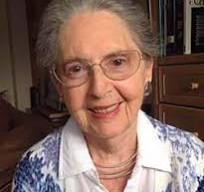Marika Henriques
Part of working analytically is about confronting the shadow – what’s been repressed and shut away. The longing to ‘just’ feel better and to get on with life sometimes means that there’s what’s called ‘a flight to health’, but invariably what has been kept in the dark seeks a hearing, and can often re-emerge with renewed energy long after one feels it has been in some way dealt with.
Marika Henriques a Jungian psychotherapist, describes this in her extraordinary account ‘The Hidden Girl’, of coming to terms with what happened to her during the second world war. Born in 1935 in Budapest she was separated from her family at the age of nine. As a Jewish child she was ‘openly’ hidden as an Aryan under an assumed name; a family were paid to look after her and she remains unclear whether she was used or abused by these people as the events of her year of hiding slipped from conscious memory. At the age of twenty she escaped from Hungary, as once again she was persecuted during the 1956 uprising – this time attacked for her middle-class background. Eventually she arrived as a refugee in England, and in time discovered her vocation as a therapist.
Blocking out almost all of the events of her time in hiding, it was only after two years in therapy that she began to feel what she describes as:
‘a dim awareness of something familiar … Something unthinkable, beyond reach, yet known … Something which occurred a long time ago is here hurting me now … Out of this ominous fog only a profound sense of pain and incomprehension appears.’
And:
‘Once when in a therapy session I attempted to lie on the couch, as is customary in analysis, I fell into a deep terror, crouching trying to hide. I stared at the white wall as if onto a screen. But the wall remained blank. No one keeps a secret as well as a child. Her survival depended on silence and I could not persuade the frightened nine-year-old in me to trust and speak out.’
After a break in analysis following a serious medical operation, Marika Henriques brought various drawings that she had made to show her therapist. His comment: ‘there will be dark times ahead of us,’ as indeed there were. What began to happen was as Marika Henriques wrote in a poem: ‘Light is giving birth to darkness’, and she became preoccupied by the question of evil. As ‘the Holocaust cast its monstrous shadow over the analytic space’, she began to re-live the repressed and terrifying wartime experience.
‘Unconscious forces pushed and pulled us about, relentlessly tossing us into a vicious archetypal pas-de-deux in which it was impossible to know who was who and what was what … It was our identification with huge compelling archetypal energies which clouded our reason and dimmed our eyes to the truth. I realized that the passive and suffering victim and the active and aggressive victimiser were two aspects of the archetype of abuse and I understood … that both of us were both victim and victimiser and that we injured each other. … I could now bear witness not only to Evil but also to Goodness, to the islands of light, the scintillae in the sea of darkness’.
